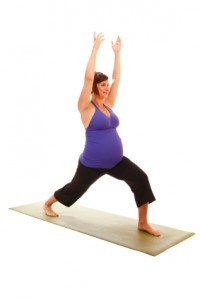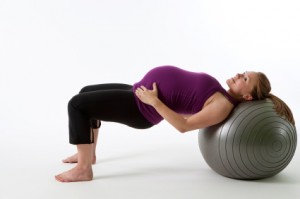 This is a really important topic for pregnant women. There is a lot of conflicting information out there about prenatal exercise. I find some of it maddening, really. If your pregnancy is low risk, you are not a delicate flower. I don’t mean that you should do anything crazy, but we know from a lot of recent research that there are numerous benefits to prenatal exercise and, in fact, moderate exercise is VERY good for you and VERY good for your baby. So sweat it out Mama! Use prenatal exercise to safely and effectively keep you and your little one happy and healthy during your 10 month pregnancy journey.
This is a really important topic for pregnant women. There is a lot of conflicting information out there about prenatal exercise. I find some of it maddening, really. If your pregnancy is low risk, you are not a delicate flower. I don’t mean that you should do anything crazy, but we know from a lot of recent research that there are numerous benefits to prenatal exercise and, in fact, moderate exercise is VERY good for you and VERY good for your baby. So sweat it out Mama! Use prenatal exercise to safely and effectively keep you and your little one happy and healthy during your 10 month pregnancy journey.
As you read this, keep in mind the distinction I made above – this information pertains to LOW RISK pregnancies. If you have any sort of complication, get exercise advice from your doctor and follow it to a T.
If you are coasting along smoothly in your pregnancy (and by smoothly I mean you are exhausted, emotional, achey boobed and sugar crazed) you can do a lot to stay in shape throughout your pregnancy. You may not always feel like you’re in shape as you huff & puff and heave your completely foreign body through the gym, but you are. Even on your worst day in the gym, you are helping yourself and your little peanut. So do what you can, as you can, and BE PROUD.
A few important reminders when it comes to prenatal exercise:
1. Listen to your body. If at anytime you feel dizzy, lightheaded, crampy, nauseous or just “off”, stop what you’re doing. Also, if you have any vaginal bleeding, vaginal fluid leakage or swelling in your calves you want to stop and contact your doctor. These are all very unlikely, but certainly reason enough to stop. Like I said above, you can safely exercise moderately. Your are not a delicate flower. But if you have a day where you feel like a delicate flower, please listen to that. Any of the symptoms mentioned above are reasons, really good reasons, to STOP EXERCISE. Don’t be a hero in the gym. You are already a hero – you’re growing a human being inside you and you’re likely going to push it out of a very small hole. Hero status achieved.
If you’re feeling great, awesome. Get in your workouts consistently and don’t be afraid to work relatively hard. On a scale of 1-10, keep your maximal intensity no higher than an 7-8. That gives you plenty of room to work hard without completely wiping yourself out or putting undue stress on your body.
If you are new to exercise (yes, IT IS OK and BENEFICIAL to start exercising during pregnancy), be careful and cautious. I would recommend working with a trainer to perfect form and technique. Because your joints are looser due to increased relaxin, your core is weakened, compromising your low back and your center of gravity will shift as you grow, it is really important that you have excellent form in exercise. Ask for help and guidance as you need it or stick to exercises you know you can perform safely on your own.
2. Work your core! No, I do not mean do more crunches. I hate crunches. They are a waste of time. Please don’t do them. This is not a personal issue I have with crunches, it is a scientific fact – they are not an effective exercise. Make sure your posture is tall, your pelvic floor is engaged (yes, kegels, as if you’re cutting off the flow of urine) and your belly button is pulled back tight toward your spine in all exercises. That is a lot to keep track of, especially as your belly grows and you can’t feel your abs contract as much. It is very important you focus on this early in your pregnancy so your core is well trained and strong later in your pregnancy.
 In all exercises, be aware of your core being engaged – abs AND pelvic floor. You can perform core specific exercises, like plank variations, pelvic tilts and leg lifts (only perform laying flat exercises up to 20 weeks) to isolate this area. I find if you’re doing full body exercises, you really don’t need to spend much time doing core specific exercises, as you will be using and strengthening your core throughout the entire workout already.
In all exercises, be aware of your core being engaged – abs AND pelvic floor. You can perform core specific exercises, like plank variations, pelvic tilts and leg lifts (only perform laying flat exercises up to 20 weeks) to isolate this area. I find if you’re doing full body exercises, you really don’t need to spend much time doing core specific exercises, as you will be using and strengthening your core throughout the entire workout already.
The beauty of strengthening your core before and during pregnancy is the many benefits it gives you AFTER pregnancy. Your belly will flatten more quickly, your low back will be at less risk of injury (this is HUGE, as low back injuries are very common after birth) and you will be less likely to pee your pants when you laugh, sneeze, cough, run, jump, exhale. Well worth the exercise, right?!
3. Just as you would non-pregnant, use strength training and interval training to maximize your results in the shortest time possible. Now, outside of pregnancy, this combo is used for weight loss, weight loss maintenance, gaining fitness, finding muscle definition. With exercise during pregnancy, this combo is used to minimize weight gain, maintain muscle mass (that will help you burn fat after birth), and help you bounce back post baby. This is your secret weapon. Do not be that mom that resorts to walking and bicep curls for 10 months because you think everything else is too much intensity for your baby.
No, I’m not saying walking is bad. But if you can handle more, do more. I don’t recommend walking for fat loss unless you have major orthopedic issues. In the same way, I don’t recommend walking for prenatal exercise unless you have a reason you need to slow workouts down. That said, walking at the end of pregnancy is completely reasonable. You will probably not be able to run comfortably or do many other forms of cardio. That is totally fine. But while you can keep up with your regular cardio regimen (that includes interval training I hope!) in order to minimize fat gain and muscle loss.
Your body will be in fat storage mode no matter what you do in pregnancy, and for a good reason. That is the evolutionary defense mechanism of growing a human. Sorry there’s no way around it. BUT, you can control muscle loss. This is why strength training is an essential component of any prenatal exercise program. And, no I don’t consider bicep curls strength training. I consider them a waste of time. Do full body strength moves, as demonstrated in this video:
4. After 20 weeks you want to stop doing exercises where you’re flat on your back. You can change from a flat bench to an incline bench or better yet, use a ball for bench exercises and keep your hips slightly lower than your knees. This keeps your torso at an angle and you can still perform many exercises.
At this time, you’ll also want to stop doing any ab exercises where you cannot feel your abs pulling in. So any sort of crunching motion or sit up motion will likely cause you to push out your abdominal wall. That is not ok, as you want to prevent diastasis recti, if at all possible (the separation down the center of the abdominal wall.) You also want to avoid big twisting movements as you get later in your pregnancy as this will make your abdominal wall pull away for the center and separate, as well.
Here are core exercises you can do safely in any prenatal exercise program with or without diastasis recti.
When it comes to prenatal exercise the moral of the story is: Be bold. Be brave. Be strong. Be smart. Listen to your body. Use exercise to keep you and your baby happier and healthier throughout your pregnancy. Exercising during pregnancy is one of the best things you can do for you and your peanut, as long as you keep is safe and smart.
Comments
Powered by Facebook Comments

